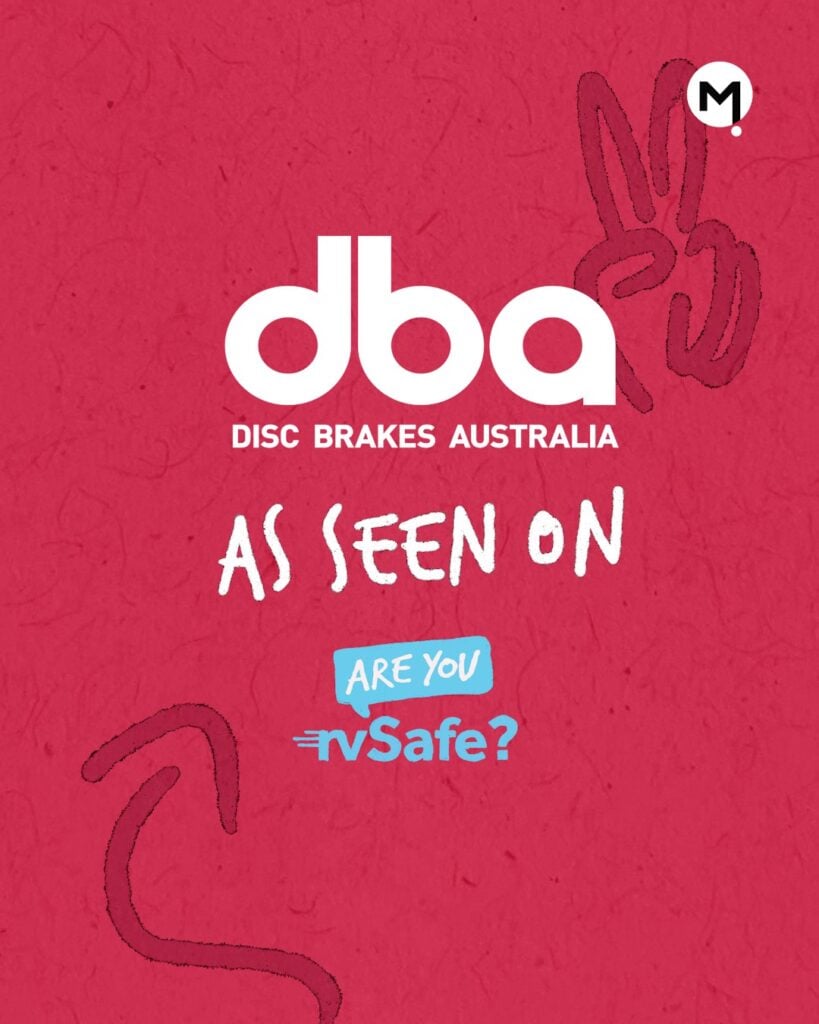Why you need to upgrade your brakes for towing




We upgraded our brakes for towing when filming the series Are You rvSafe? for a safer ride. Here’s why you should, too!
If you’ve ever towed a caravan, boat, or camper trailer, you know how important it is to have solid brakes. It’s not just about pulling a heavy load—it’s about stopping it, too.
Let’s be honest: the factory brakes that come on most 4WDs and SUVs are fine for everyday driving, but when you’re towing a couple of tonnes behind you, they can quickly start to struggle.
Stock brakes are built for the average driver, not for heading down a steep descent with a bit (or a lot) of extra momentum from your caravan or camper. Stock vehicle brakes are designed for hauling nothing heavier than a couple of groceries and your family and dog in the back. But throw in a big van behind you, and things can get dicey pretty quickly if you don’t have enough stopping power.
We went with the DBA Brake Upgrade Kit for the Volkswagen Amaroks. Why? They’re designed with towing, off-roading, and GVM upgrades in mind, all of which are relevant to this television/YouTube series. And all of which will give you, as a tower and/or off-roader, peace of mind when the road or track gets tricky. The DBA kit includes bigger 4000 Series rotors, hefty 6-piston calipers, Xtreme-Performance pads, and steel braided hoses—all engineered to handle the extra load that comes with towing.
Here’s a short clip from the series showing them in action…or alternatively, watch the full episode here!

One of the big differences with a DBA Brake Upgrade Kit is the caliper. The kit for vehicles like the VW Amarok and Ford Ranger swaps out the standard twin-piston caliper for a bigger 6-piston setup. Why does that matter? It’s all about spreading the force. More pistons mean better pressure distribution on the brake pads, giving you more even and consistent braking. This makes a world of difference when you’re trying to slow down both your 4WD and the few extra tonnes it’s dragging behind.
And it’s not just the calipers that are bigger—the rotors are larger too. More surface area means more friction, which ultimately means better braking. Plus, DBA’s kit is cleverly designed to still fit under the standard 17” wheels on the Ford Ranger, so you don’t need to go buying a set of bigger rims just to fit the brakes.

When you’re towing, your brakes are working a lot harder, which means they’re generating a lot more heat. Too much heat and your brakes start to fade, which is not what you want when you’re halfway down a long hill with a caravan behind you.
DBA’s 4000 Series rotors in their Brake Upgrade Kit use what they call a “Kangaroo Paw” design. It’s basically a set of specially shaped pillars inside the rotor that helps to keep the airflow up and the heat down. It works a bit like a radiator, getting rid of the heat so your brakes stay cool and effective even when you’re putting them to the test.

Towing is all about reliability, and that’s where DBA’s Thermal Stability Profiling (TSP) treatment comes into play. This process strengthens the rotors, reducing the risk of warping when things get hot and heavy. Whether you’re towing a boat up a windy coastal road or making your way through the outback with a camper in tow, you need brakes that aren’t going to let you down.
And for a bit of added reassurance, DBA’s 4000 Series rotors, which are featured in the Brake Upgrade Kit, come with three coloured paint stripes—Thermo-Graphic Heat Paint, they call it. These stripes change colour if the rotor gets too hot, so you can get a quick read on whether your setup is working for the kind of driving you’re doing.
If towing’s part of your lifestyle—whether it’s the annual caravan holiday, regular weekend trips with the boat, or towing a camper through some challenging terrain—it’s worth giving some thought to your brakes. A brake upgrade like DBA’s isn’t about flashy specs; it’s about safety and control. When you’re towing, it’s not just your vehicle you’re looking after, it’s whatever you’ve got hitched up behind you, and all the precious cargo inside. And having the right brakes makes all the difference when it comes to bringing the whole setup to a safe stop.
